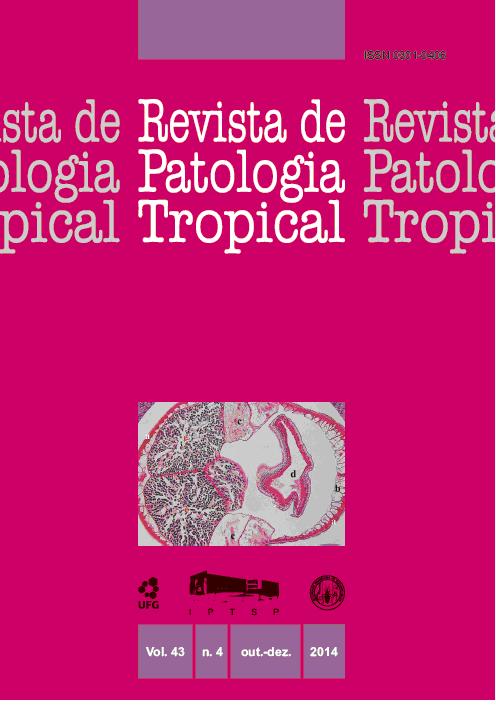Parasitological and molecular diagnosis of enteroparasites of Entamoeba histolytica/E. díspar complex among resident children and employees of a child care institution at Niterói city, RJ, Brazil
DOI:
https://doi.org/10.5216/rpt.v43i4.33609Keywords:
Parasites, feces, Entamoeba histolytica, diagnosis, ELISA, PCRAbstract
Intestinal parasites are important agents of human diseases, besides being responsible for impairingchildhood development. Although transmission is well known, lack of information and precarioussocial and economic conditions are risk factors that allow maintenance of parasite cycles, favoringtransmission. This study was carried out among resident children and employees of a CatholicInstitution, located in Niterói, Rio de Janeiro, and consisted of delivering lectures and collectingfresh stool samples, which were processed through the Willis and Hoffman, Pons and Janermethods. Enteroparasites were found in 41 samples (60%) and Blastocystis hominis was the mostprevalent (44%). Additionally, in seven samples where microscopic examination was positive forthe E. histolytica/E. dispar complex an ELISA was employed to detect E. histolytica and only onereacted positively in the immunoassay. In 37 samples a Nested-PCR was carried out for detectionof E. histolytica and E. dispar and in 12 samples (32%) a product with 195 bp was observed usingE. dispar primers, while there was no amplification product with E. histolytica specific primers. Asthe Institution has a good pattern of hygiene not related with the results, a superficial analysis of itsperipheral area was carried out and showed lots of garbage in the neighborhood and sewage outflowinto the play area of the Institution. We concluded that these points may be responsible for the soilcontamination and could be incriminated as one of the sources of infection in the children.Downloads
Downloads
Published
How to Cite
Issue
Section
License
The manuscript submission must be accompanied by a letter signed by all authors stating the full name and email address, confirming that the material has not been published or is under consideration for publication elsewhere, and agreeing to transfer copyright in all media and formats for Journal of Tropical Pathology. The authors will not be paid for published articles. They are solely responsible for the content of those articles, even if the Editor holds the right to adjust them to the norms of the journal.
The reviewers will not be paid for the peer review process.

